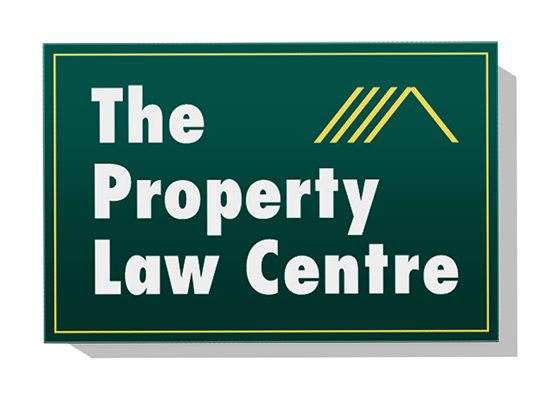Cross Leased Properties – Information for Purchasers
The Cross Lease Title System
Cross leases were a popular form of ‘subdivision’ dating back to the 1960’s through to the 1980’s.
The cross lease system was particularly useful for small developments and the cost advantages of shared drainage and common spaces made it attractive to developers.
A cross lease creates two layers of rights – rights of ownership and rights of use.
A cross lease is where multiple individuals own an undivided share of the land, which they build on, with the land being leased from the other owners (often for a term of 999 years).
It enables two or more flats, houses or other buildings to be built on one section (lot) and to be owned separately. It is a common form of ownership in New Zealand for home units and town houses.
1. What Do You Own?
When purchasing a cross leased home unit or house you will normally own:
(1) An undivided (half, third, or quarter etc) share in the total section; and
(2) A lease (also called a cross lease) of your unit or house, normally for 999 years; and
(3) The exclusive use of the land around your flat/house as shown on the deposited plan by a circled capital letter; and
(4) The shared right (with the other owners) to use any areas on the section which are marked “Common Area” on the deposited plan for purposes of entry and exit (not parking or storage).
(i) Deposited Plan. The house or home unit is described in the legal documents as a “flat” on a “deposited plan” which is a survey plan held (deposited) at the local Land Registry Office. For example: “Flat 2 and Garage 2 on Deposited Plan 12378”. This deposited plan is sometimes called a “flats plan” or a “cross lease plan”. A copy of this plan is usually attached to the ownership Certificate of Title.
Some early cross leases do not have any exclusive or common areas marked on the plan. In such cases all of the land is in fact a “common area” for use by all owners.
2. Considerations for purchasing a cross lease:
The underlying fee simple to a cross lease property is owned jointly by the owners of each flat that exists on it. These owners – as a group – then lease parts of the land back to individuals in the group.
- The areas leased and the perimeters of the buildings are detailed on what is known as the flats plan. There are usually rules within the lease dealing with the use and maintenance of any common areas, such as driveways.
- Having a positive relationship with surrounding flat owners is important in a cross lease situation because any changes an owner makes to the flat (externally) must be consented by the owners of the other flats. If the neighbours are difficult to deal with, you will likely find that putting a garage or deck on the property to be trickier than expected.
- In the Agreement for sale and purchase there is a Title Requisition period – this
allows the purchaser to object to the title in certain (limited) circumstances. You should obtain legal advice on the status of title, how the lease works and the obligations between the flat owner and the owners of the remaining flat owners as soon as possible. - Check that any structures not connected to the flat such as a garage or deck, have been consented to by the owners of the other flats. Any construction on the leased areas must be consented to by all owners of the other flats. If a garage or a deck has not been consented in writing, the owner of the flat is exposed to a future claim demanding that the structure be pulled down at the owner’s expense or that the neighbour(s) is compensated to consent to the existing structure.
- Be familiar with the imitations on use of the property imposed by the lease memorandum. Your neighbouring flats will usually be subject to the same restrictions.
- Be familiar with you and your neighbours’ obligations in respect of common areas (e.g. shared driveways) including contributions to maintenance.
3. Important – Alterations/Additions.
If an addition has been made to the flat/house or if a deck or carport or garage is added then the consent of the other owners should have been obtained.
Where a closed in addition is made to an existing building a new survey plan should be prepared and a new cross lease (and mortgage) registered and a new title issued.
The cost is estimated between $10,000.00 and $15,000.00. This includes surveyor’s costs and legal costs. The Council may have further requirements that could also affect this estimate.
It is therefore essential when purchasing a cross lease property that you obtain a copy of the deposited plan (usually attached to the Certificate of Title) and satisfy yourself that:
– The size, shape and location of the buildings you are buying (including conservatories) are correctly shown on the plan;
– The exclusive use area around the flat/house is the correct shape and size;
– The common area(s) is/are correctly shown.
These checks should be made before signing the purchase agreement or soon afterwards. Your rights of objection will generally expire two weeks after signing. Check with The Property Law Centre before signing the Purchase Agreement to ensure your rights of objection have not been deleted or altered.
4. Other Considerations
Under the cross lease you will generally be required to:
• Be responsible for maintaining the property in good condition and for repairing the interior and exterior of your flat/house.
• Have shared responsibility for maintenance of common areas and exterior fences.
• Have shared responsibility for exterior maintenance where the flats/apartments are part of one building.
• Not cause a nuisance to other owners (this can include the keeping of some pets or animals)
• Pay the rates (normally separate for each flat/house) and abide by local body and government requirements.
• Insure for fire (or pay a share of the premium on a joint policy).
• Not build additions or make alterations without the other owners’ consents.
• Pay the annual rent if requested (usually 10 cents). In practice it is not requested.
• In some leases a change of exterior colours will require the consent of the other owners.



